Amidst the vast tapestry of nature’s wonders, there stands a plant that embodies a world of intrigue and fascination – the bamboo tree. As we delve into the lush landscapes where the bamboo thrives, we uncover a plethora of secrets encapsulated within the characteristics of the bamboo tree. Join me as we embark on a journey to unveil the lesser-known facets that define the captivating essence of the bamboo tree.
Contents [hide]
- 1. Characteristics Of Bamboo Tree
- 1.1. Characteristics of bamboo Rhizomes
- 1.2. Characteristics of bamboo Roots
- 1.3. Characteristics of bamboo Buds
- 1.4. Characteristics of bamboo Shoots
- 1.5. Characteristics of bamboo Culm sheath
- 1.6. Characteristics of bamboo Culm Cum
- 1.7. Characteristics of bamboo node
- 1.8. Characteristics of bamboo Internode
- 1.9. Characteristics of bamboo Sulcus groove
- 1.10. Characteristics of bamboo leaves
- 2. Some Products Made From Bamboo
1. Characteristics Of Bamboo Tree
1.1. Characteristics of bamboo Rhizomes
With mature bamboo plants, the height ranges from 10m to 15m, characterized by numerous nodes. The stems of mature bamboo plants are generally upright, with diameters ranging from 4cm to 6cm. The internodes of bamboo shoots are between 30cm to 90cm in length. The wall thickness of the bamboo internodes measures around 0.2cm to 0.6cm.

1.2. Characteristics of bamboo Roots
Bamboo tree characteristics, bamboo has a network of feeder roots that extend from the rhizomes. These roots are responsible for extracting nutrients and water from the surrounding soil. Roots generally remain relatively close to the surface, typically within the top few inches of soil. This shallow root system aids in rapid growth and resource acquisition. Although bamboo roots are not deeply anchored, their extensive horizontal spread and interconnected rhizomes provide stability to bamboo clumps, especially in windy conditions.
1.3. Characteristics of bamboo Buds
Buds play a pivotal role in producing new bamboo shoots. These shoots emerge from buds during the growing season and contribute to the vertical growth of the plant. It is often protected by sheaths that cover and shield the developing growth. These sheathes help safeguard the delicate new shoots as they emerge. Buds can also give rise to new branches and leaves, contributing to the overall structure and foliage density of the bamboo plant.
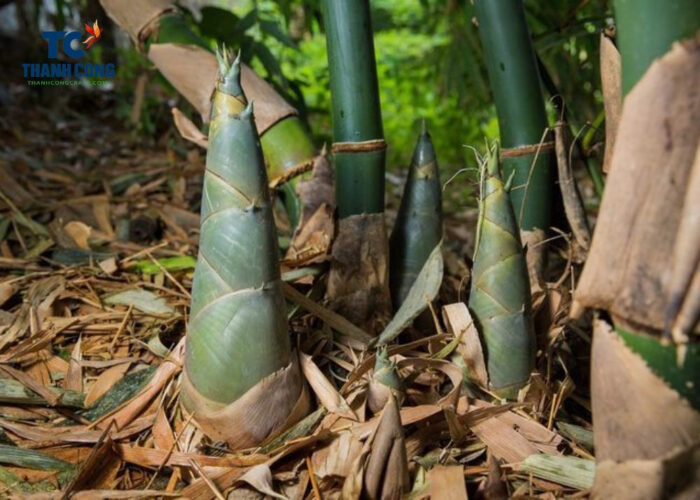
1.4. Characteristics of bamboo Shoots
Bamboo shoots are young, emerging culms (stems) of bamboo plants. Bamboo shoots gradually develop into mature culms, contributing to the plant’s overall height and structure. Bamboo shoots are known for their rapid growth rate, often achieving their full height within a short period, depending on the species and environmental conditions. Characteristics of a bamboo, young bamboo shoots are tender and edible, making them a culinary delicacy such as soups, stir-fries, salads, and curries, in numerous cuisines around the world.
1.5. Characteristics of bamboo Culm sheath
During the early stages of growth, bamboo shoots are enclosed by the culm sheath, which shields them from potential damage caused by environmental factors, pests, and harsh weather conditions. Culm sheaths are temporary structures that encase the young shoot. As the shoot matures and elongates, the sheath gradually splits and falls away. Culm sheaths are attached to nodes on the bamboo stem. They often overlap each other in a manner resembling roof tiles.
1.6. Characteristics of bamboo Culm Cum
Culm sheaths are a distinctive feature of bamboo plants, serving as protective coverings for emerging shoots and culms. Culm sheaths play a vital role in shielding and safeguarding the delicate young shoots as they emerge from the ground. Its sheaths vary in color, texture, and size depending on the bamboo species. They can range from pale green to brown, and their texture can be smooth, fibrous, or even covered in tiny hairs. The texture of culm sheaths is often tough and fibrous, providing robust protection to the emerging shoot.
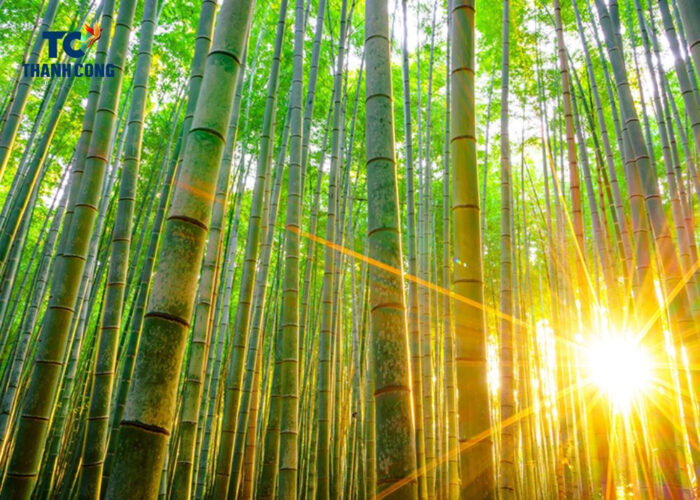
1.7. Characteristics of bamboo node
Nodes are distinctive features found along bamboo stems that play a crucial role in the growth, structure, and unique characteristics of these plants. Nodes are separated by internodes, the segments of the stem between adjacent nodes. The length of internodes varies between bamboo species. Nodes are also present on the underground rhizomes of bamboo, marking points of origin for shoots. The distinct appearance of nodes gives bamboo its characteristic jointed or segmented appearance.
1.8. Characteristics of bamboo Internode
Internodes are the elongated segments between two adjacent nodes along the bamboo stem. These segments give bamboo its signature jointed and segmented appearance. The length of internodes varies significantly among bamboo species, influencing the overall height and appearance of the plant. Bamboo internodes are notable for their rapid growth, with some species capable of elongating several inches per day under optimal conditions. The hollow and cylindrical structure of internodes contributes to the flexibility of bamboo stems, enabling them to sway in response to wind and other forces.
1.9. Characteristics of bamboo Sulcus groove
Sulcus grooves contribute to the flexibility and strength of bamboo culms by allowing them to expand and contract in response to changes in moisture and temperature. The depth, width, and spacing of sulcus grooves can vary between different bamboo species, adding to the diversity of bamboo culm textures. These grooves also aid in water drainage and prevent water accumulation on the film’s surface, reducing the risk of rot and fungal growth.
1.10. Characteristics of bamboo leaves
Characteristics of bamboo leaves, bamboo leaves are essential components of these versatile plants, contributing to their appearance, growth, and ecological significance. Bamboo leaves come in various shapes and sizes, ranging from narrow lanceolate to broad and elongated forms, depending on the species. The upper surface of bamboo leaves is often smooth and glossy, while the lower surface may be covered in fine hairs or a slight fuzz. Leaves feature prominent veins that radiate from the central midrib, contributing to their structural integrity and nutrient distribution.
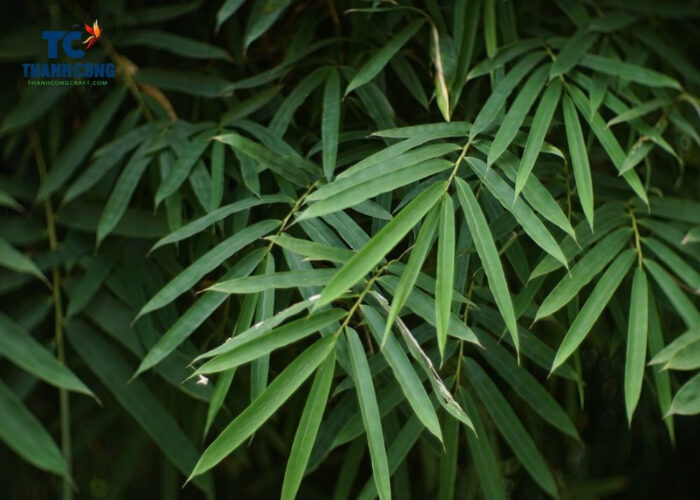
2. Some Products Made From Bamboo
Bamboo is a highly versatile resource that can be used to create a wide range of products. Here are some common products made from bamboo:
- Bamboo Cups Wholesale: Bamboo cups, crafted from bamboo fibers, are an eco-friendly alternative to conventional disposable cups. These cups are not only biodegradable but also lightweight and durable. They offer a stylish and sustainable option for enjoying beverages, be it at home, in offices, or on-the-go.
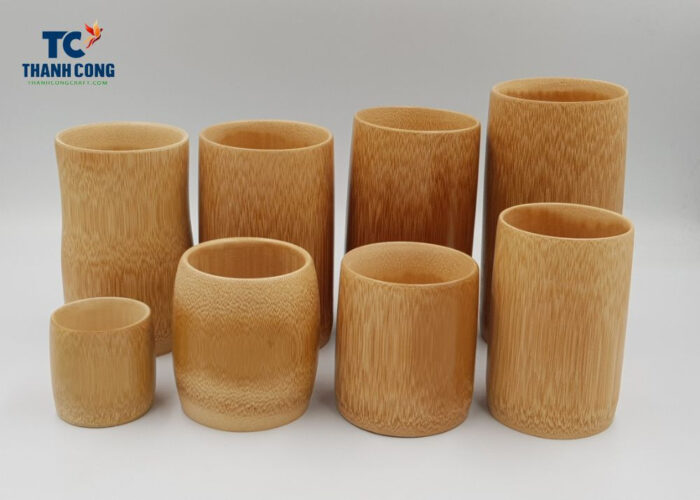
- Bamboo Cutlery and Utensils: Bamboo’s strength and resistance to heat make it an ideal material for crafting cutlery and utensils. Bamboo forks, spoons, and knives are not only functional but also sustainable choices, reducing the need for single-use plastics.
- Bamboo Flooring and Furniture: Bamboo’s versatility extends to interior design. Bamboo flooring offers a durable and aesthetically pleasing option for homes and offices. Similarly, bamboo furniture pieces bring a touch of nature indoors, adding warmth and sophistication to living spaces.
- Wholesale Bamboo Baskets: Bamboo baskets, with their intricate weaves and natural aesthetic, serve a multitude of purposes. They are used for storing and organizing items, carrying groceries, and even as decorative elements in homes. The sturdiness of bamboo makes these baskets reliable companions for daily tasks.
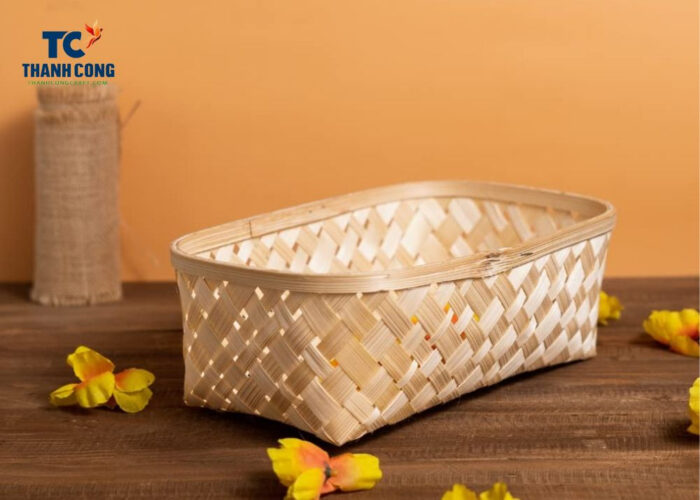
- Bamboo Clothing and Textiles: Bamboo fibers are used to create soft and breathable textiles. Bamboo clothing, such as shirts, dresses, and activewear, offer comfort and eco-friendliness to fashion enthusiasts. Bamboo bed linens and towels also provide a luxurious and sustainable option for enhancing daily routines.
- Bamboo Construction and Craftsmanship: Bamboo’s strength-to-weight ratio makes it a viable material for construction. It is used for building structures, bridges, and even scaffolding. Additionally, bamboo’s pliability lends itself to intricate craftsmanship, resulting in products like bamboo blinds, mats, and even musical instruments.
- Culinary Delights from Bamboo: Bamboo shoots, an essential ingredient in many Asian cuisines, are enjoyed in various dishes. From stir-fries to soups, these tender shoots add a unique flavor and texture to meals.
If you have any further questions, please don’t hesitate to contact Thanh Cong Craft email at info@thanhcongcraft.com or message us at WhatsApp: +84967485411. Hope to serve you soon! Best regard!
Check more: Coconut tree vs palm tree


